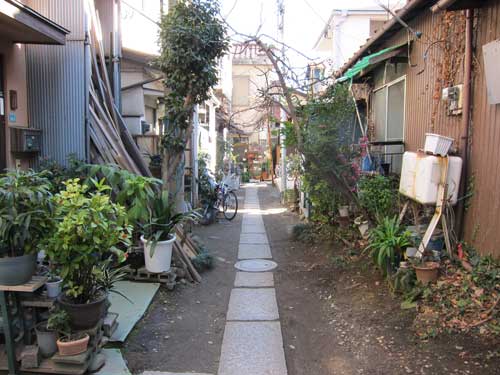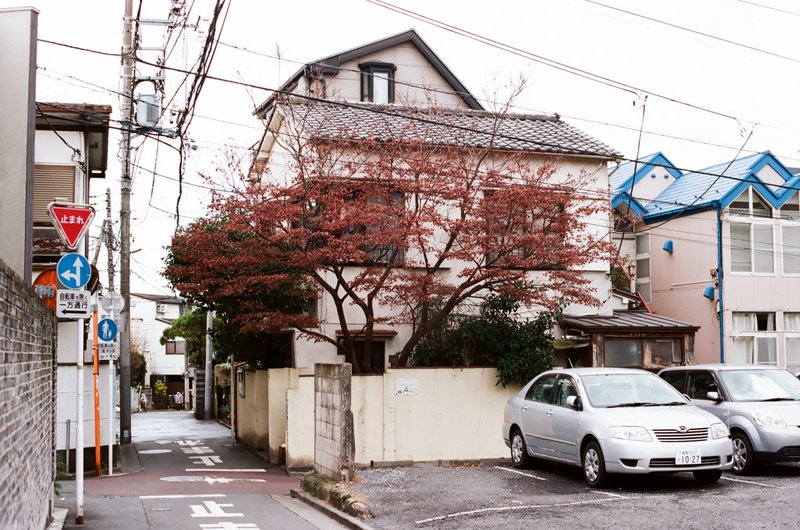
狭い路地に、昭和時代の自宅や成熟した木は素敵です。中野で。
I love this Showa house, its gorgeous tree, and the juxtaposition with small parking lot and blue roofed 80s townhouse. There is a charm to these older houses and their mature landscapes.

I found this lane when biking home from Koenji. I felt like I was in a small town, many decades ago.
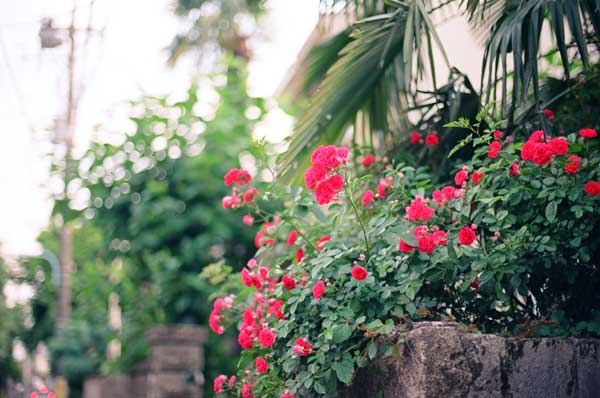

I love this outpouring of pink roses extending from the second floor of the house out into the small street.

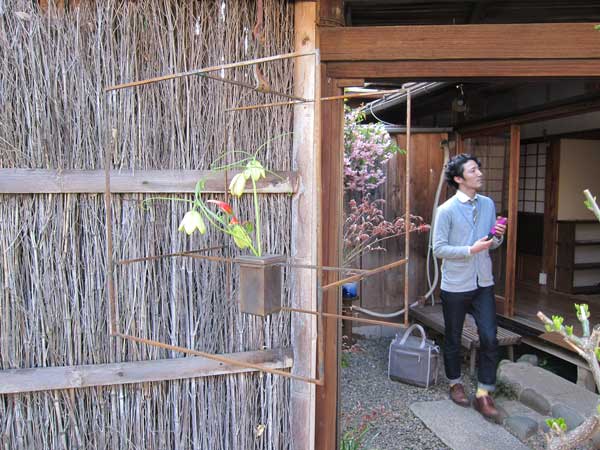
Omotesando Koffee の入口はとても素敵です。美味しいコーヒーが飲めるだけじゃなくて、小さい庭が四季を感じさせてくれます。春に、桜とモクレンが咲いていて、金属製の花瓶には毎週、違う花がいけてあります。おしゃれなお客さんは三年以上の常連で、バリスタオーナが東京に来る前に、大阪のカフェにも行きました。
This is the lovely entrance to Omotesando Koffee. It would be enough just being one of Tokyo’s best espresso coffee bars. O K also sells a single pastry that is eggy and square and incomparable. And O K has a micro-garden that is incredibly charming, with many traditional Japanese plants including maple and a lovely drooping cherry tree with long stemmed flowers.
The fashionable gentleman in the photo explained to me that he used to drink coffee at the Osaka coffee bar run by the same owner, before he moved to Tokyo three years ago. In the foreground is a lovely, metal sculpture and flower vase with understated petals.
Visiting Omotesando Koffee you feel like you’re on a country lane, not in the middle of a mega-city.

新しい道と古い道が出会う場所。
New town and old cities meet at this intersection.
On Linus Yng’s @ArchitourTokyo Western Tokyo bike exploration, the second stop was a fascinating corner. A wide and modern road (4 lanes, sidewalks)- Inokashira Dori (井の頭道り)- from the skyscraper district of Nishi Shinjuku meets a major ring road (6 lanes, sidewalks)- Kan-nana Dori (環七道り). The modern road dead ends into a narrow one-way street full of old sheds that must have housed many small businesses and residences in the post-war era.
I was fascinated by Linus’ explanation of how planning created these large roadways, and paradoxically preserves old neighborhoods on the edge. Although many maps show the road continuing through this neighborhood, Izumi (和泉名店街), the money and priority must have become exhausted. What you see instead is a neighborhood preserved for decades because no one will invest in improving or replacing buildings that are in a right-of-way of a possible, future major road.
In addition to the lane that runs in the center of the planned new roadway, Linus also pointed out the 10 to 15 story buildings that extend to the edge of where the road might one day be. In much of Tokyo, new buildings along major roads are often granted heights up to 15 stories, whereas the buildings behind them remain low. Tsukamoto Yoshiharu of Atelier Bow-Wow calls this the “cream puff pastry” of Tokyo urban planning, and explains that one function of these modern buildings, built to new standards, along the major roads is to provide a firebreak in this disaster-prone city.
It is amazing that for the width of the proposed road, the neighborhood is a time capsule of a Japan that was rebuilding itself rapidly after the war. I’d like to go back and explore more about who is still living there, what businesses thrived in the post-war period, and what creative re-use may be happening with these provisional buildings that were never intended to last this long.
UPDATE: Linus shared his excellent photos of this intersection with me later.

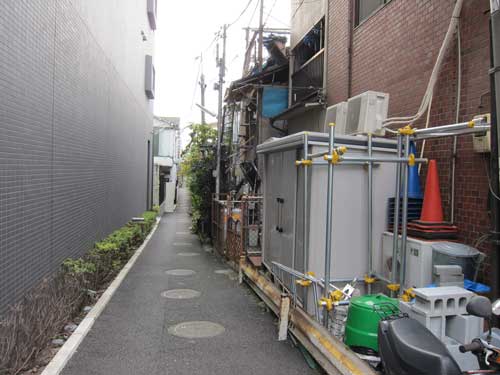

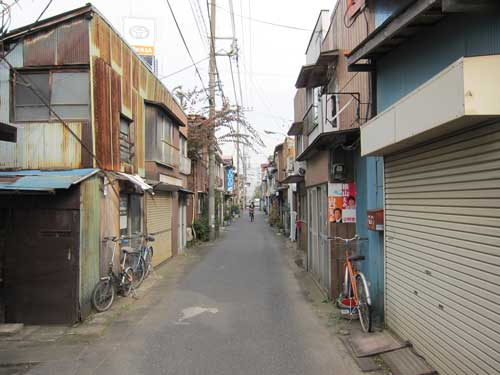

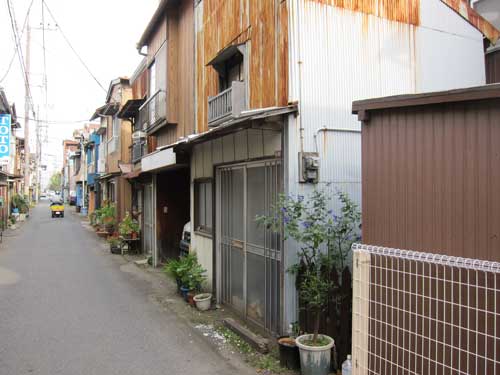

When my friend Stokes told me about the wildness in Nishi Azabu Juban, I was somewhat incredulous. He was staying briefly at a childhood friend’s house there, and quickly discovered narrow lanes and uncultivated yards and odd spaces that he insisted on showing me. The neighborhood is in central Tokyo, and includes both very expensive homes alongside more modest, old timers’ residences.
In what must be a planner’s nightmare, late summer weeds are pushing out of cracked concrete steps, barely paved lanes lead to houses, and the urban forest seems ready to reclaim the land. There is something comforting to feel wildness in the center of the city, the impermanence of the built environment, and the power of the unplanned.





I love this tiny lane in Nakano Fujimichou that extends two blocks between a larger building and a series of small residences. The proportion of pavement seems just right: soil, pavement, soil in almost equal thirds. The lane serves as access to residences, bicycle storage, laundry drying, garden, and public passageway.
I wonder if the land is officially part of the ward or the residences. In any case, I imagine that it is the residents who maintain it and set informal rules about usage. The charm of this type of small semi-public semi-private space seems impossible to create by government planners or real estate developers.

My friend Eri, a pianist and music teacher, invited me to go for a walk near her college in Zoushigaya. I wasn’t sure what to expect since I had never been there and it’s close to Ikebukuro, an area that always seemed to me like a lesser Shinjuku. Eri’s tour from Gokokuji to the Kishibojin shrine was delightful: narrow streets, lots of sidewalk gardens, and a Shitamachi feeling. We ended the walk with a warm soba lunch.
My favorite image is this public train set in a rather barren raised garden on a small street across from a cemetery and the music school. The owner left a sign inviting passer-bys to enjoy his battery-operated train. And to please remember to turn it off when they leave. What a remarkably generous idea. I also thought only in Japan would people remember to save the battery; in my city, it would be quickly stolen and resold for spare coins.
I will post photos from this winter walk over the next few days. Below is an image of a small unpaved lane. I like how it has a rustic feel, and you can sense the vibrant life of residents, a carpentry shop, plants and bicycles.
